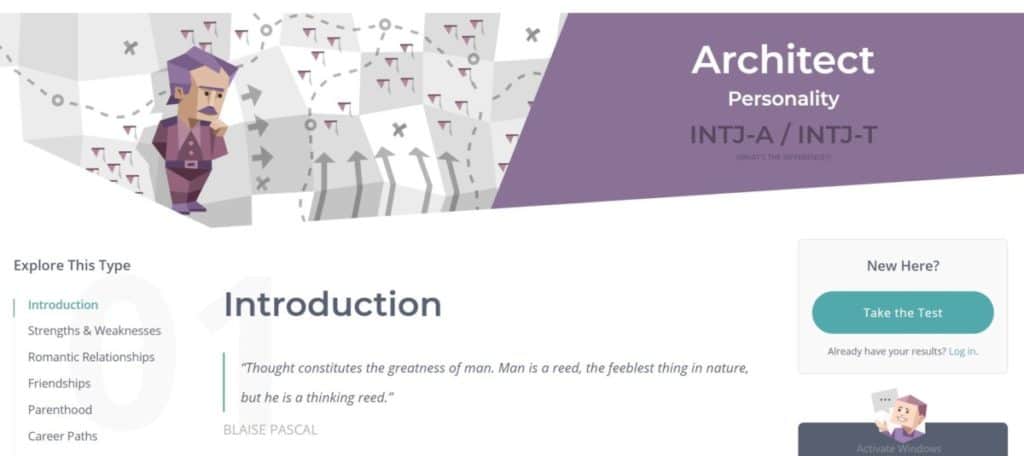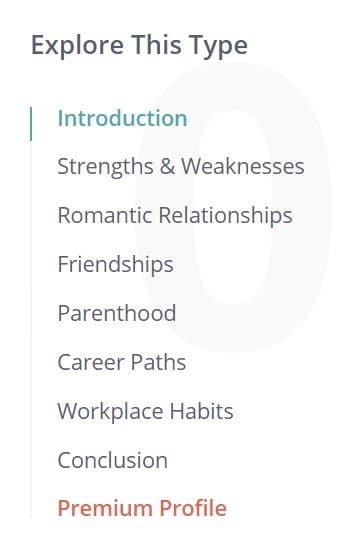Today you’re going to see how to write the perfect characters for your screenplay.
Or from this post, shall I say the perfectly imperfect character.
By the time you’re finished putting your characters through these strategies listed below, you will never get a bad character note from an agent manager or script reader again.
I put together advice from Quintin Tarrentino, Aaron Sworkin, Damien Chazelle, and more.
let’s dive right in.
1.) Give Your Characters an Internal and External Goal
What are these?
External goals are something tangible the character wants to achieve.
Like to win a gold medal or large sum of money.
For example, in the movie Whiplash, it’s the desire to be a great musician by winning “first chair” in one of the best music schools in the country.
Now an Internal goal is something the character needs to change to get there external goal. Most of the time, but not always, the character is unaware of this goal.
Back to Whiplash The main character Andrew needed to sacrifice everything.
Only then will he get the recognition he so deeply wanted.
Why are these important?
Because it makes your character more real and relatable.
Everyone wants something in life. We are all working towards something. And what most people find out when they finally achieve it is they had to change internally to get it.
We end up talking to different people when we want a promotion. We Stop eating late at night when we want to get that six-pack.
Keep in mind:
Whether that change was good or bad is not the point, don’t think of this as something that has to be a good or bad thing. Don’t have a moral outlook when writing your characters.
So, having both goals we see and goals we don’t is what will make your characters human.
2.) Show the Audience What Characters Want. Don’t tell Them
If you have studied screenwriting before you would be aware of the show don’t tell rule.
Or should I say guideline?
Because sometimes it ok to tell.
Anyway, what is it mean? Well, it means its better for the story if the character uses actions to show desire instead of saying it with words.
The best movies do this. You can never point to a piece of dialogue and fully understand what the character wants but you understand their goals just by what’s happening on screen.
For example, Toy Story Woody wants to remain Andys favorite toy. He doesn’t flat out say it but as the story advances you can almost feel it.
Everything that happens shows his hatred for the new toy Buzz Lighter. The grief on his face when Buzz gets chosen over him says everything we need to know.
3.) Give Your Characters Flaws
Flaws is one of the greatest problems that newer screenwriters can’t wrap there head around.
We all fundamentally comprehend that flaws are apart of human nature but we forget to assign them to our characters.
Most of the time when new writers are creating characters they tend to write the perfect parts of themselves.
You have to be honest and go deep within yourself and pull out the most disturbing things.
Show your vulnerable side.
Its the only way to make your character relatable to the reader.
For example, did you know a lot of comic books people hate Superman? Or even worse, have an indifferent attitude towards him.
Why?
Because he’s almost too perfect.
Yes, he has that whole kryptonite thing, but other than that, he’s the perfect alien man with the perfect suit, girlfriend, and temperament.
He does everything right almost all of the time.
Batman, on the other hand, is damaged severely.
Even though he’s rich he’s lonely, broken, unhappy, and without anyone who truly understands him.
He’s someone who we can all relate to on some level.
Here’s an exercise you can use to create this in all your characters.
First name what the character is good at and then name something they lack.
This can be skill-wise personality-wise anything really. Then write it in a sentence and every time your working on your character remember the sentence.
For example,
“He’s the smartest guy in the room until he gets angry.”
For every positive trait, it’s best to have a negative one. This creates a balance for your characters.
4.) Let The Characters Make Decisions
What does this mean?
Treat your characters like adults, not children.
You force children to go to bed, brush their teeth, to wake up for school. But adults have their own personality habits etc.
Think to yourself what would someone like this with this personality in this situation actually do. Then write that.
Stories that are character-driven are unpredictable, intresting, and relatable all at once.
You combine this with an outline and you have a well-balanced world with characters and plot working for and against each other creating a masterpiece.
What does this look like?
Some great examples are:
- Nightcrawler (2014)
- American Beauty (1991)
- No Country for Old Men (2007)
- Jackie Brown (1997)
- Black Swan (2010)
Please check out some of these movies to see exactly what I mean.
Let’s look at “No Country for Old Men” as an example.
Anton played by Javier Bardem is a mentally ill killer who was hired to find 2 million dollars.
But he’s so crazy that in his pursuit he takes a different path to find the money. Some might say the long way.
His path
Which is full of dead bodies. One even being the very person who hired him. He does this out of his own frustration.
Then later, he goes to complete the mission for a guy who no longer is even alive. All the choices Anton makes in this movie are his alone the writers didn’t force him into these situations.
He naturally makes these choices himself.
It’s not the plot is merely the framework for your character’s choices.
5.) Write Characters You Know
Do you know what makes character writing easier?
When you are writing people you’re familiar with.
I mean real people. In my first script, I ever wrote. My characters didn’t seem real until I wrote people that I understood.
My mother, father, sister, best friends. Modeling character based on people helps you do all the tips above almost naturally.
This is easier if your story is about your life or close to an actual story of someone you know. But, if it’s not.
Here’s how you do it.
First, find out who your character is most likely is. Think of their personality. How would they react? What would they do? etc.
Then, when your writing your character’s decisions and even dialogue write that person into the character. Don’t hold back let the story really have it.
Doing this if there are any problems with your script won’t be with the characters.
6.) Each Character Should Sound Differently
This might be obvious but not so obvious.
You might be saying, of course, do everyone shouldn’t sound the same.
But you might be surprised how hard this is when all five characters are being written by the same person. How easy it is for everyone to merge into one big copy of you.
You might be fine at first but after a while, once you hit page 45. You forget each person’s personality.
One way to avoid this trap is to ask before each page.
“What would (Character name) Do here? “
Not What’s good for the story here? Again don’t make them do it. Find out what they will do from the past decisions and actions in the script.
Also, ask “What is (Character name) feeling here?“
These two questions will keep you grounded and into the mind of the person your writing instead of merging your mind into the character your writing.
7.) Personality Type Your Character
Another way to write characters for your screenplay is to personality type them. By using a personality questionnaire.
Did you know there were 16 personality types in the world?
Picking one of them to base your character off of is a smart way to handle the creation of your characters. This ensures no one will ever sound the same and will help you write characters you haven’t actually met in real life.
One way to do this is I use 16personalities.com.
It looks like this

There are about 60 questions. And you should answer based on the character you’re trying to write.
Afterward, you will get your personality type.
For example “INTJ” Which stands for Introversion, Intuition, Thinking, Judgment. On the site, they will explain more about these terms.

Yea its kind out embarrassing but that’s me!
They give you a couple of pages about the person and who they are. And on the left side

They give you how the person will react in certain situations.
Such as relationships, the workplace, with friends and so on. Almost every situation you would put your character in they give a detailed response about how the person will act.
Why is this helpful?
Say you’re writing a romantic drama. And your main character is someone like me an “INTJ.”
From this test you know now they INTJ’s don’t feel good in relationships unless they are able to communicate and have the other person be honest with them completely.
So even if the other person is not cheating or lying the fact that this person cant ask questions and satisfy his or her curiosity they would feel uneasy most the time.
Knowing this deep information about your character provides depth making your character multidimensional.
8.) Make The Characters Go Through Hell
No one likes a boring story and one way to ensure a boring story is to have boring characters.
People in real life most of the time are boring.
Unless you give them a goal and consequences for that goal and to give those consequences a time frame and or a whole lot of pressure.
Then and only then will it get intresting.
One way to spice up your characters and your story, in general, is to make your character go through hell.
They need to see the dirt of their decisions and the trophy of there successes. Only the extremes will do.
We don’t need the punishment for the hero not obtaining the goal to be a bad day. That’s not enough. It’s average.
A good example is “The Matrix”
Let’s take the mentor character named Morpheus.
What’s his goal?
To find the one. The one who would save humanity from the machines.
What happens if he doesn’t find the one?
The machines will kill everyone.
Morpheus has searched for a long time putting himself and his crew though near-death situations just for a chance to find this person.
And if Morpheus is wrong about wh this one person is. He will then go through a so-called mental hell. Everything he believed his whole life will have been wrong. As if a Christian after death finds out there is no god.
Ask your self a question when outlining your story.
“Why does my character need this goal?”
“What will happen if they don’t get it?”
Make sure the second question, to your character, is life-changing.
9.) Creates Sympathy for Your Characters
Creating sympathy is one of the fasted ways to get an audience to connect with your character.
Naturally, as people, we feel bad for others who are in less fortunate situations. People who try and try but things never seem to work.
Think Will Smith in the film “Pursuit of Happiness”
But, this always doesn’t have to happen with sad life changes like stories.
This is one of Aarron Sworkin’s favorite screenwriting techniques. If you noticed in the first 10 pages of his scripts he starts his characters at the lowest points of the story. Take a read at the examples below:
Money ball
Billie Bean works for one of the worst recorded baseball teams in the league. On top of that, he himself is a failed baseball player. Starts movie.
Molly’s Game
Molly Bloom was a young ski professional with high hopes that were shattered due to a career-ending injury. Now she works as an assistant. Starts movie.
The Social Network
Mark Zuckerburg is a college student who can’t seem to make a connection with anyone. Hardly any friends and definitely no girlfriend. Starts movie.
Once we see the worst parts of the character the film then starts. Now, this doesn’t have to happen in the beginning every time but it does have to happen.
Even for the antagonist, the audience at least has to see their point of view.
We have to relate to them on a human level in order to care for the journey they’re taking. If not the reader won’t care and put down your screenplay.
10.) Why Your Hero Wrong and Your Villian is Right
The last tip is one you need to apply to multiple characters.
Your hero needs to have a dark side and your Villian needs to have a good reason for being evil.
Doing this will keep your story balanced.
Haven’t you noticed that in most good movies we see the villain having a good point of view? Even if the way they are doing it doesn’t seem right.
Let’s go back to our first example The film “Whiplash.”
Terrance Fletcher is the menacing music teacher. But, there is a method to his madness. He believes this is the only way to create the best players the world has to offer. Unfortunately, it’s though pain and suffering.
From his point of view, pressure makes diamonds.
And you know what, he’s not wrong.
Most great people have gone through pain in order to become great.
Most people can agree with this but what people don’t agree with is his method. And because of this, he is the villain of the film.
To do this you cant pick sides when writing.
Conclusion
Ok, now you have the keys to the puzzle of writing great characters for screenplays.
It’s important to remember to take your characters through all ten of these tips to ensure that they don’t show up as weak one-dimensional people.
One way to test your character’s vitality to the story is to ask yourself this question:
If I pull this character out of the script will my film fall apart?
One of the worst notes you can get as a screenwriter is:
“this character doesn’t matter to the story.”
If you can replace any one of your characters with anyone else and have them do the same things. And everything works out fine.
Your character is useless.
Pulling any character out should be like pulling a thread out of a blanket. It should all unravel. The role of Each character should be just as important as the main character. Even if its a small one.
Now it’s time to hear from you:
Did I miss anything?
How do you develop your characters?
I would love to hear about it in the comments below.
Happy Writing.

